Node.js and PHP are two essential web technologies commonly featured in web development endeavors. Both have contributed to server-side development, and Node.js even serves both client-side and server-side development.
PHP has been serving developers for almost three decades, and it now powers 78% of the web. Node.js is relatively new in comparison yet expanding remarkably fast, becoming a popular choice due to its full-stack development capabilities.
There’s one big question: Which one should you pick for your next project — the fresh, robust, and fast Node.js, or the aging yet still dependable and efficient PHP?
Well, both are excellent options on many different levels. However, you need to get to know both of them to understand which one is the better choice for your next project or your subsequent learning.
In this article, we’ll dive deep into both Node.js and PHP by discussing all the features, characteristics, and benefits of these two web technologies.
Why are we comparing these two technologies? Although they may not seem directly analogous, we’ve noticed plenty of users who have searched for “Node.js vs PHP.” This article will help answer that question by looking at their key features, main differences, and use cases.
Let’s get started!
What Is Node.js?
Surprisingly, several web sources mention Node.js as a framework of the JavaScript programming language (JS), which certainly raises a lot of confusion among both the present and potential users. So let’s clear the air: Node.js is neither a programming language nor a JavaScript framework.
Node.js is more like an environment where you can curl JavaScript to perform as a server-side scripting tool. Metaphorically, if Node.js is Ironman, then Node is the suit, and JavaScript is the person within.
Node.js is a single-threaded, open source, cross-platform runtime environment to develop fast and scalable server-side and networking applications. It consists of an event-driven, non-blocking I/O architecture and operates on the Google V8 JavaScript runtime engine. As a result, it’s an efficient and ideal tool for real-time application development.
Additionally, Node.js is written in C and C++ programming languages alongside JavaScript. That’s because low-level C is one of the most efficient programming languages to construct operating systems, database engines, and all other codes relevant to system programming.
On the other hand, C++ has several traits that allow Node.js to communicate with the operating system to establish an internal connection directly with the server, which is inconceivable for a client-side programming language like JavaScript.
As a result, it interacts with C++ to manage these computer characteristics and results in Node.js, a super-efficient programming environment for both server-side and client-side.
Why Use Node.js?
According to StackOverflow’s 2021 Developer Survey, 36.19% of professional developers used Node.js for extensive development last year/2021, and there is assurance that the number is growing this year/2022. That’s because Node.js offers a comprehensive range of features as:
- Full stack JS: Node.js allows you to code both on the client-side and server-side in Javascript, resulting in a powerful frontend and backend development combination. It’s arguably the most significant node.js benefit. Likewise, it overwhelms the limitations of employing two resource teams while you could save a considerable amount of resources for overall project development.
- Simplicity: Node.js is pretty simple to learn. It’s a fantastic technology to start if you’re new to web programming. You can start learning quickly with the help of an abundance of tutorials and a vast user community.
- Non-blocking code: It’s one of the most compelling reasons to choose node.js as your server. Node.js is primarily event-driven, with most of the codes relying on callbacks. Consequently, it allows the programs to pause or sleep while other requests are available.
Furthermore, node.js libraries and core API provide non-blocking calls to develop performant applications. In addition, these programs leverage I/O wait time to satisfy other requests.
- Fast and Scalable: It leads to a great deal of scalability in applications. Since Node.js is single-threaded, it can handle numerous concurrent connections with high performance. Similarly, the non-blocking thread execution also makes Node.js faster and more efficient.
- Powerful backend connection: Node.js is developed in C and C++, resulting in a direct and robust connection with the server.
- Vast Ecosystem: There are numerous open source Node.js packages available to aid in your projects. Notably, the NPM ecosystem offers you a collection of more than 1 million open source Node.js packages.
- IoT Protocol: Node.js doesn’t require a lot of server-side memory and resources. As a result, software developers can employ IoT development to enable concurrency links across several devices. Besides, Node.js supports the Message Queuing Telemetry Transport (MQTT) protocol that mostly IoT apps use. Thus, it becomes easier to integrate independent and third-party devices at the backend level.
- Community support: Node.js receives global user support and contribution to improvise and expand the platform as an open source project. Therefore the community is constantly getting bigger and providing more assistance and resources for beginners and professionals.
Who Uses Node.js?
Since its introduction in 2009, Node.js has recreated a vital role for several industry leaders. Nowadays, all kinds of business, from startups to top companies, are relying on Node.js.
Let’s get to know some of the industry’s big names that use Node.js:
Pros and Cons of Node.js
Currently, Node.js is one of the most widely used software development technologies because of its frontend and backend development and cross-platform capabilities.
Pros of Node.js
Let’s go through all the advantages of using Node.js:
- Scalability: Node.js cluster modules provide load balancing over several CPU cores, making it simple to achieve desired results through smaller modules without exhausting your RAM. Also, Node.js implements a non-blocking event-loop architecture that provides excellent scalability and entitles the server to execute requests in real-time. Furthermore, Node.js assigns applications to multiple teams and enables you to define and allocate tasks simultaneously. As an overall result, you get a high-performing framework using fewer resources.
- Cross platform functionality: Developers can combine NW.js and Electron to create real-time cross-platform apps and don’t need to write different code for multiple platforms. Accordingly, you don’t need to be concerned if your development team lacks an in-depth understanding of Objective-C and C#; Node.js can construct native applications without them. Also, Google tools can be an excellent assistance for developers to code and debug.
- JSON support: Backend technologies such as PHP and Ruby on Rails utilize JSON format for communication; Node.js does the same without translating between binary models and instead uses JavaScript. Consequently, creating RESTful APIs for NoSQL database support becomes simple, such as MongoDB. Furthermore, the javaScript environment provides easy data transfer connectivity with data transfer standards, increasing efficiency.
- Shorten Time-to-Market: As Node.js is full-stack, lightweight, and fast, you can scramble up the total development time. Asides, your team has access to an abundance of Node.js libraries, ready-to-use programs, and assets from GitHub. It will reduce a significant amount of development time and struggle. As a result, you are more likely to shorten your time to market.
- Google support: Node.js is made on Google’s V8 JavaScript engine and serves as a frontend and backend development tool. Moreover, the Google V8 engine allows Node.js to run numerous JavaScript scripts in the frontend simultaneously. Therefore, it’s simple to detect errors in the front end and the backend with Node.js.
Google lists Node.js as one of the quickest runtime system engines. Besides, Google Cloud offers JavaScript developers tools to build cloud-native applications. You can use SDKs, in-IDE assistance, and native runtime support on Cloud Run, Cloud Functions, and GKE for a faster app development process. Furthermore, Google Cloud can execute your application from start to finish.
Cons of Node.js
Let’s go through all the possible disadvantages of using Node.js:
- Unable to process heavy computation: To date, Node.js doesn’t support multi-threaded programming. Nevertheless, it can handle significantly more sophisticated applications than Ruby, although it’s not intended to perform long-running calculations. Likewise, multi-threaded intensive computations can degrade performance. Hence, Node.js is suitable for single-threaded complex systems; otherwise, it will waste processing power and time.
- Unstable API: The Node.js Application Programming Interface (API) changes regularly and remains unsettled. Moreover, with every new API release, several backward-incompatible changes force the developers to alter their access code regularly to cope with the latest version of the Node.js API.
- Callback hell: JavaScript heavily relies on callbacks because of its asynchronous nature. Therefore, a function is assigned that conducts the tasks one after one from a long queue. Each queued task in the background with individual callbacks creates a massive callback known as “callback hell.” It directly reduces the quality of the code, and as one callback is nested within another, callbacks in several levels create a difficult-to-code situation.
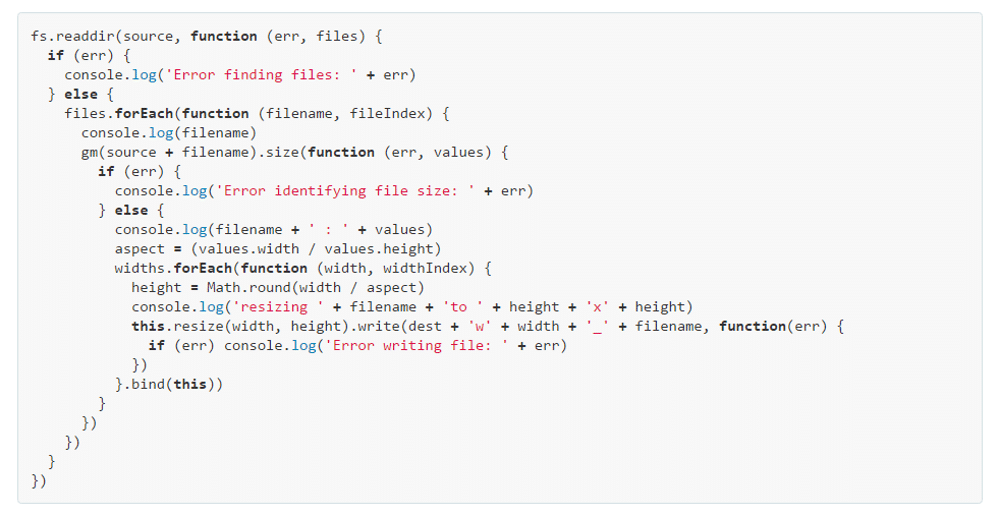
What Is PHP?
PHP stands for Hypertext Preprocessor, which initially stood for Personal Home Pages. PHP is an object-oriented, open source, and server-side scripting language that serves primarily as a web development tool.
PHP is mainly used to create web servers. Nonetheless, it can be executed in the browser and as well as through the command line. If you don’t want to display your code output in the browser, you may do so in the terminal.
PHP uses the Zend Engine, the most widely used implementation for regular use. However, Facebook built various implementations of PHP, such as parrot, HipHop Virtual Machine (HPVM), and JPHP.
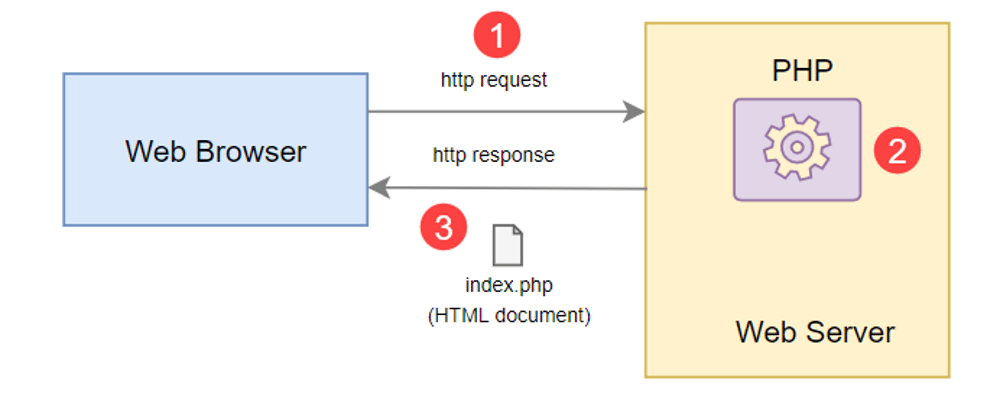
If you want significantly improved performance, speed, and security, you should use PHP 8.0 or 8.1. Besides our self-healing setup, Kinsta supports PHP 7.4, 8.0, 8.1, 8.2, 8.3, 8.4, 8.5.
Why Use PHP?
According to StackOverflow’s 2021 Developer Survey, more than 22% of professional developers used PHP for heavy programming last year. Many web experts predicted PHP would wind up a dead programming language, but it’s withstood the test of time. A considerable number of users are still relying on PHP and some of its excellent characteristics, which include:
- Cross-platform: PHP suits most major operating systems, including Linux, Windows, and macOS. Likewise, PHP is compatible with all primary web servers, including Nginx, OpenBSD, and Apache. Furthermore, several cloud platforms, such as Microsoft Azure and Amazon AWS, enable PHP.
- HTML-friendly: Anyone comfortable with HTML can quickly shift to PHP. Within a page, PHP and HTML are interchangeable. PHP may be placed either outside or inside the HTML. While PHP adds additional functionality to your site, the core design remains HTML.
- Server-side scripting language: To date, PHP is the most used server-side scripting language. It interprets scripts on the server-side rather than the client-side (like JavaScript). In addition, it creates a personalized interface for each user and extends the capabilities beyond HTML. Besides processing HTML, it aids in creating PDF, GIF, JPEG, and PNG files.
- Connects all databases: PHP is an adaptive language. PHP supports almost all databases, including MySQL, PostgreSQL, MS SQL, db2, Oracle Database, and MongoDB. As a result, it allows developers more freedom to determine the best-suited databases for the application under development.
- Web compatibility: PHP is compatible with most web technologies, from cloud services to seamless HTML integration. Correspondingly, all hosting services have default PHP adoption. PHP’s versatility and flexibility correspond with other programming languages and can be found across many application development stacks.
Who Uses PHP?
PHP figuratively owns the entire internet. Powering more than 78% of websites, there’s no argument that PHP’s prevalence in the development world remains high. Likewise, it’s still a key technology for some of the largest global tech companies.
Let’s look at some of the top companies that rely on PHP:
Pros and Cons of PHP
Just like with any scripting language, there’s a plethora of benefits and drawbacks to PHP, despite its dominance in the market. We’ll explore these in detail next.
Pros of PHP
Let’s go through all the possible advantages of using PHP:
- Inexpensive: PHP is a free, open source development tool, and its tools are free as well. Furthermore, multiple frameworks, including Laravel and CodeIgniter, and CMSs such as WordPress and Drupal, enhance PHP’s features and make for a convenient development environment.
- Extensive documentation and resources: You can access numerous tutorials, manuals, references, and demo projects about PHP development. Whether you are a beginner programmer or a professional, these materials will aid you when you’re struggling.
- Less maintenance: PHP frameworks support the model-view-controller (MVC) architecture and simplify web application creation and maintenance. For example, you can use MVC architecture to divide a web application into models, views, and controllers. You may also use a PHP MVC framework to separate the application’s user interface and business logic.
- Automation: You can use PHP bindings for developer browser-based automation test scenarios. The framework is adaptable, and the Selenium web driver works efficiently in all major browsers. Furthermore, PHP frameworks’ functions and tools help you automate your daily web development tasks like caching, authentication, session management, and URL mapping without costing you in efficiency.
- User-friendly: PHP has a shorter learning curve, which you can surmount quickly. If you know a primary language like C, you can quickly catch on to PHP for application development. Even if PHP is your very first language, you can install PHP on any operating system or install PHP on any server with ease, then try it out yourself.
Most users pick PHP because it’s simple to learn, easy to comprehend, and popular. A considerable number of programming languages are complicated and daunting to beginners, but PHP is well-organized, clear, and fluid.
Cons of PHP
Let’s go through all the possible disadvantages of using Node.js:
- Outdated methodology: Machine learning is gaining popularity, and it’s the future of technology. Thus, languages like Python are attracting users. However, while PHP has its libraries, it cannot compete with Python’s TensorFlow, Scikit-learn, Theano, and Keras libraries to construct web apps powered by machine learning or similar modification of its old methodology. As a result, PHP is not the ideal solution if your app will require machine learning.
- Security flaws: PHP has a negative reputation for security due to the low entry barrier for new programmers. And inexperienced developers create websites and apps with potential vulnerabilities. Consequently, these outcomes frequently contribute to PHP’s image as a less secure language. However, if you precisely understand PHP and are an experienced developer, you’ll get rock-solid web security.
- Framework quality: Most popular PHP frameworks are open source and free to use. So, web developers may use these web frameworks without raising project costs. However, not every framework offers similar strengths or features in the community and attracts many developers. As a result, some PHP frameworks suffer from proper support and resources.
Node.js vs PHP: A Head-to-Head Comparison
Now that we’ve gained some insight into both technologies, their features, and their applications, it’s time to compare Node.js vs PHP based on some specific parameters. This will help you determine the best choice for your particular application development by illustrating how efficient and simple they are to work with, and which may provide the most return on your development efforts and time.
Let’s compare them head to head — Node.js vs PHP.
Similarities
The similarities between Node.js and PHP include:
- Application types: Node.js and PHP run on servers and handle routed requests. You can overlap them in helping static content, dynamic web pages, and data requests. Though PHP introduced web socket servers, Node.js web sockets are the most popular nowadays. Node.js uses socket.io, and PHP uses Ratchet. Additionally, both of them serve streams (Node.js does this with Stream API, and you’ll need to write some custom codes for PHP).
- Extensibility: You can expand both Node.js and PHP, as they’re open source, and there’s a prosperous ecosystem of add-ons for each. Likewise, you can tweak the source code and fork it the way you find the best for your project.
- Interpreted: Both Node.js and PHP are interpreted, and both permit you to perform developing tasks on the exact implementation page without interrupting your process. Easy debugging, minimizing program size, and dynamic typing are the benefits an interpreted language offers.
- Cross-platform: Both Node.js and PHP are platform-independent. They can both operate on Linux, macOS, or Windows, and Node.js on even SunOS. There are official Docker images on the Docker hub for Node.js, though you’ll need to run PHP directly from the command line. You can also compile the source code for both Node.js and PHP.
- Service: Both Node.js and PHP serve web requests and are pretty efficient in serving web sockets. They smoothly manage dynamic web content and deliver an interactive and user-friendly interface.
Target Audience
Every technology has a precise base of users and audiences. Similarly, Node.js and PHP have their specific audience. Node.js attracts modern learners interested in full-stack development with less effort and higher Node.js salaries. At the same time, PHP targets a wide range of audiences from all over the web.
That’s because PHP alone powers 78.9% of the websites online. Well, that’s nearly the entire internet! On the other hand, Node.js is a fast-growing potential full-stack JavaScript environment becoming popular among developers and users.
However, PHP has been too vast to overcome so far. Therefore, it’s challenging to predict the eventual winner.
Frameworks
The better the programming language framework, the less you need to code. The bundled codes, premade modeling APIs, and other elements make the programming process easier and shorter for you. Both PHP and Node.js offer different types of frameworks to serve different purposes.
Node.js
Node.js has encountered a significant increase of its libraries in a short amount of time, including Meteor, Derby, Express, Koa, Nest, Sails, and so many others. These frameworks increase productivity by lowering development time and resource usage. Notably, Node.js outnumbers PHP frameworks in quantity.

PHP
Throughout the 27 years of its lifetime, PHP has gained an extensive library of frameworks for different niche markets. PHP frameworks like Laravel, CodeIgniter, Symfony, CakePHP, and Phalcon have served professional developers and mainstream development agencies for a long while. Also, industry giants like Facebook implemented their version of PHP frameworks like HipHop.
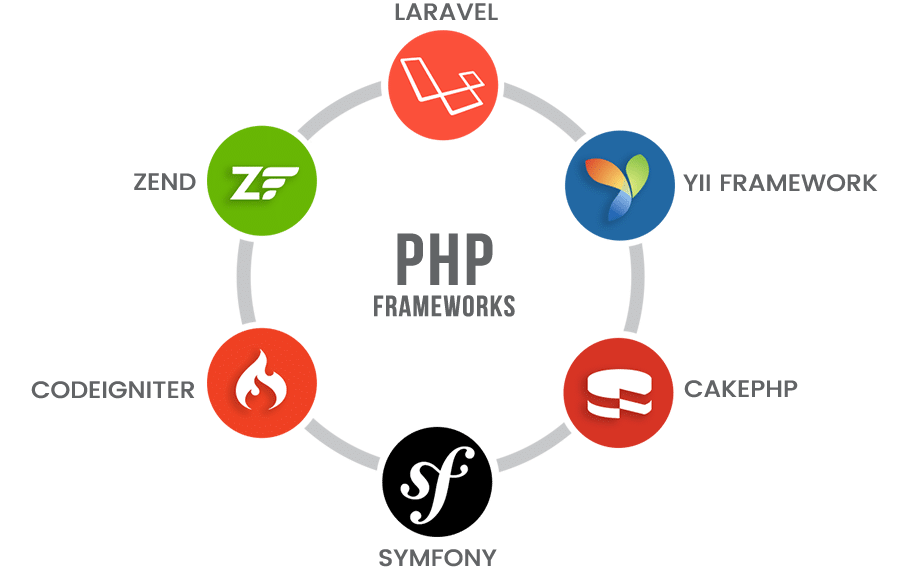
Though PHP has been serving the developers globally for decades with its rich frameworks, Node.js is becoming more popular among professionals because of its modern methodology and a rapidly increasing number of frameworks.
Learning Curve
If you already know JavaScript, you’ll quickly grasp the value of Node.js. But if you’ve never touched the language, it’s wiser to learn JavaScript first and then adopt the Node.js environment. Knowing another language beforehand can help pick up the basics of JavaScript and build servers with Node.js parallelly.
PHP is easy to learn, but it’s challenging to master. Also, PHP quirks, such as inconsistent functions or return values, are more comfortable to learn and master than JavaScript and Node.js peculiarities.
However, the time and effort you invest into learning Node.js will pay off in spades. Because Node.js is becoming more popular than PHP, knowing it will be valuable.
Speed & Performance
While developing a basic project, processing or executing speed is mostly insignificant; most technologies are swift enough to handle the execution. However, performance becomes a concern if you run costly (processing-wise) functions that require better algorithms, compilers, or languages. And if you’re building real-time systems that run on low-powered machines, speed and performance become crucial.
Let’s look at how Node.js and PHP perform and handle the execution of programs.
Node.js
Node.js has a high-speed execution rate because of its lightweight, efficient, event-driven, and non-blocking I/O model. However, for performance, it relies on three programming “wizards”: Async, Concurrency, and Parallelism programming.
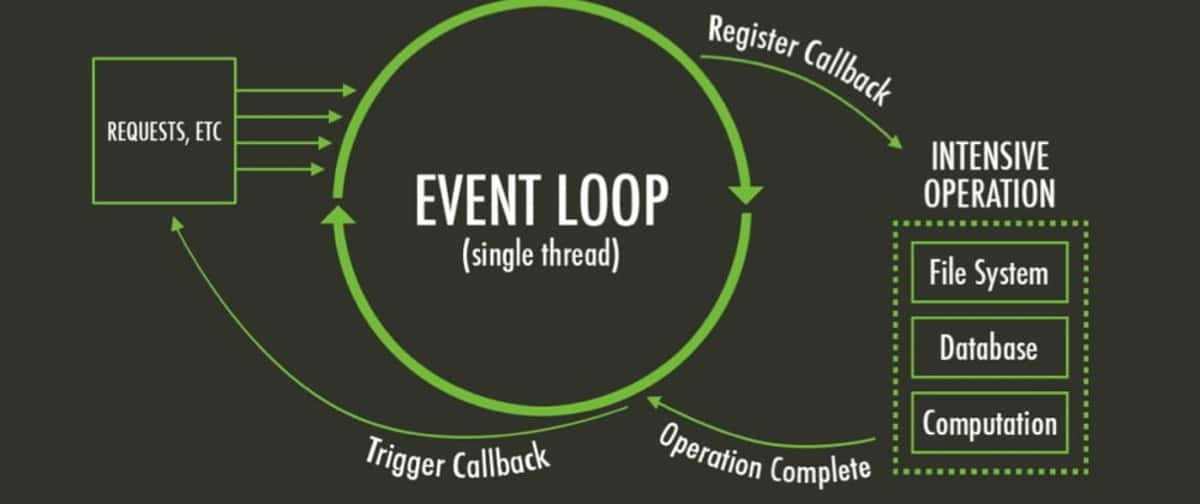
The asynchronous event-driven design style ensures performing several actions simultaneously when running an application. Node’s events system makes it more feasible and faster, allowing the server to respond to the previous API request. In a nutshell, it’s the asynchronous programming paradigm.
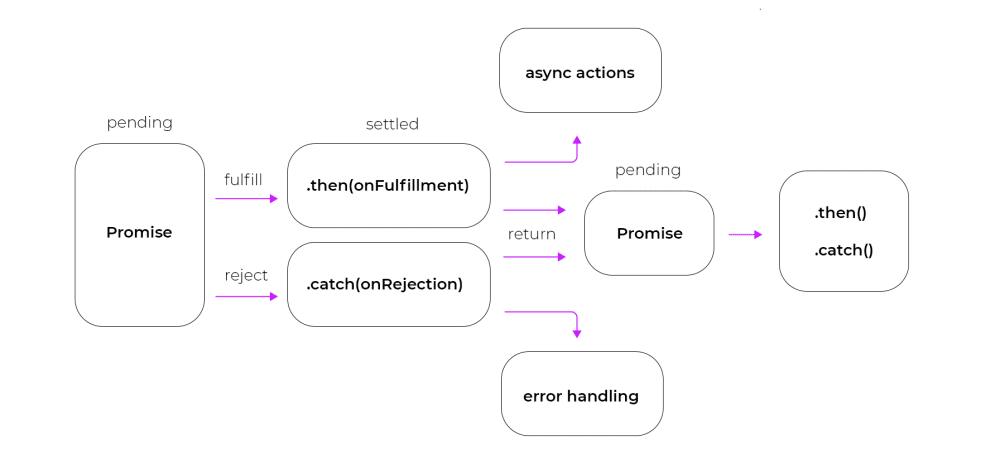
The concurrency feature allows running multiple tasks at the same time. Different functions with different purposes execute in concurrency. Moreover, Parallelism uses the Web Workers API to perform various processes simultaneously.
PHP
On the other hand, PHP uses a slower, synchronous code implementation approach that executes each module function in the order indicated within the code. If one query fails to perform, the following one will not run until the concurrent one completes.
Therefore, the language keeps the performance steady and executes programs with accuracy regardless of the speed. Pairing with HHVM Virtual Machine improves PHPs performance, but Node.js remains superior.
With a combination of modern-day programming functions, Node.js can execute programs faster than PHP and most other programming languages like Python, Java, Go, and so on.
Security
For sure, no programming language is unhackable, nor does any come without a single security vulnerability. But you can build a system that is potentially immune to the most aggressive security attacks.
Both Node.js and PHP have their vulnerabilities (and also resolutions). That said, the security of a website or an application correspondingly relies on the developer’s way of coding.
Node.js
As a Node.js user, you may encounter vulnerabilities such as the machine-in-the-middle (MITM) attack, code injection, and advanced persistent threats. For example, Node.js faces security issues like XSS attacks, data leaks, Cross-site Request Forgery (CSRF), and HTTP response header issues.

However, the system also offers security practices, authentication tools (Okta, Firebase, OAuth), OWASP Dependency-Check, and Acutinex to handle the issues with comfort, decrease vulnerability, and create a secure system for you.
PHP
While using PHP, you may face security issues like SQL injection attack, XSS (cross-site scripting), session hijacking, directory traversal, and a few more.
PHP offers preventions and paths to stand against all these issues. But here, we release the truth genie from the bottle:
Your PHP code is as secure as you write it.
If you code it right, your program is as secure as it should be with several other programming languages. But if you’re an inexperienced coder, there’s a comparatively higher possibility of your website or the app having a security vulnerability.
If you think about the safety and security issues thoroughly while building the system, you should think through a secured design. You can encrypt and decrypt a string in PHP by using the OpenSSL function extension called Cryptography, and you can also implement Language-Based Security (LBS) to strengthen the security of your applications.
Request Handling
Request handling refers to the communication of web applications with either the users or the clients. Performing a task starts with receiving a request from the UI, then sending it to the server-side and executing it. Likewise, a proficient request-handling process determines the system’s performance, precision, and outcome.
Node.js and PHP handle clients’ requests differently.
Node.js
Node.js accepts numerous client requests and queues them in EventQueue because it has an event-driven architecture. Therefore, Node.js has its EventLoop — an endless loop that simultaneously receives and handles requests, saving up computation power.
If Node.js can process the request without I/O blocking, the event loop will process the request and deliver the response back to the client on its own. Using the Node.js cluster module or worker_threads, you can also make your system handle multiple requests in parallel.
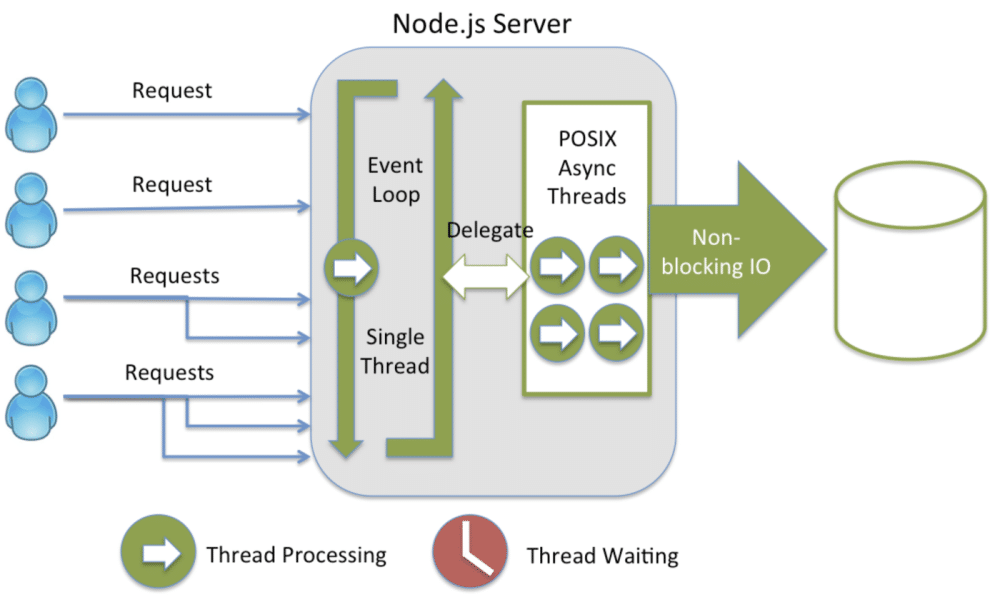
PHP
PHP can handle one request at a time. So, for example, if you input 10 requests, it’ll execute them one after one in 10 different submissions, using the same computational capacity each time.
Although you can make PHP handle multiple requests using a PHP library or a web server, Node.js remains superior because of its native request handling features.
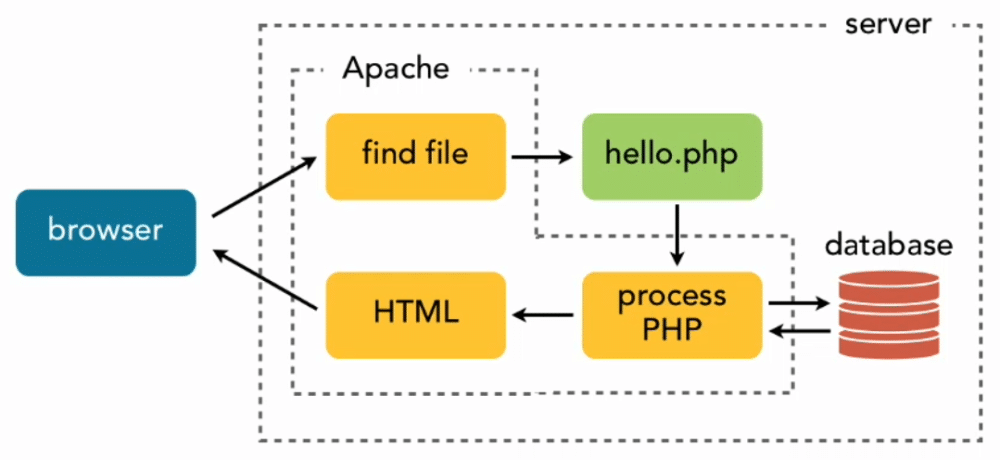
Database Integration
Both Node.js and PHP support a variety of databases. However, there are a few particular databases that suit them best and reduce the threat of possible attacks while functioning within the same application.

Node.js
Node.js suits all kinds of databases, and you can choose the database according to your program’s complexity and goals. Usually, Node.js works efficiently with Not Only SQL (NoSQL) databases like MongoDB and CouchDB, or with graph database systems like Neo4j.
However, NoSQL injection attacks are a well-known flaw. Furthermore, they are significant in number compared to SQL injection because SQL code architecture makes it naturally immune to such attacks.
PHP
PHP adopts a collaboration with traditional/relational databases, including MySQL, MariaDB, Db2, MongoDB, Oracle, PostgreSQL, and SQLite. However, MySQL seems to be the most used PHP database.
MySQL is SQL-compliant and offers various advantages. It’s simple, incredibly powerful, quick, secure, and scalable. In addition, MySQL operates on diverse platforms, including UNIX or Linux, Microsoft Windows, Apple Mac OS X, and others.
Modules and Extensibility
Modules are components of programs that serve one or more related functions/classes as a sub-program.
A few independent modules can build a program. If you want to extend the capability of technology, you can take the assistance offered by these modules.
Node.js
Modules in Node.js are isolated units of code that interface with an external application based on their relevant capabilities. The modules can be a single file or a grouping of several files/folders. You may use modules because of their reusability and ability to break down problematic code into digestible bits.

PHP
There are three types of PHP modules: core extensions; bundled extensions that are default with the PHP installation; and entirely external extensions — the entirely external extensions don’t come with the core PHP or any package.
PHP extension modules are mostly written in the C programming language. However, you can compile them with PHP to allow either static loading (as part of the binary file) or dynamic loading (through the php.ini directive extension=modulename.so).
PHP has attained a vibrant collection of extension modules that provide a great deal of extensibility. Though Node.js is snowballing, PHP modules still outnumber those for Node.js.
Ecosystem (Community & Support)
The community of an open source platform enriches its ecosystem. Users and enthusiasts are responsible for the available libraries, frameworks, premade projects, resources, and support for newcomers. Therefore, the community’s expansion also influences the ecosystem in a positive way.
Node.js
Node.js, like other successful open source projects, has an active online community, which means you’ll discover a fortune of online materials as well as rapid responses to your concerns via online references, Google Groups, IRC, or GitHub issues queues.
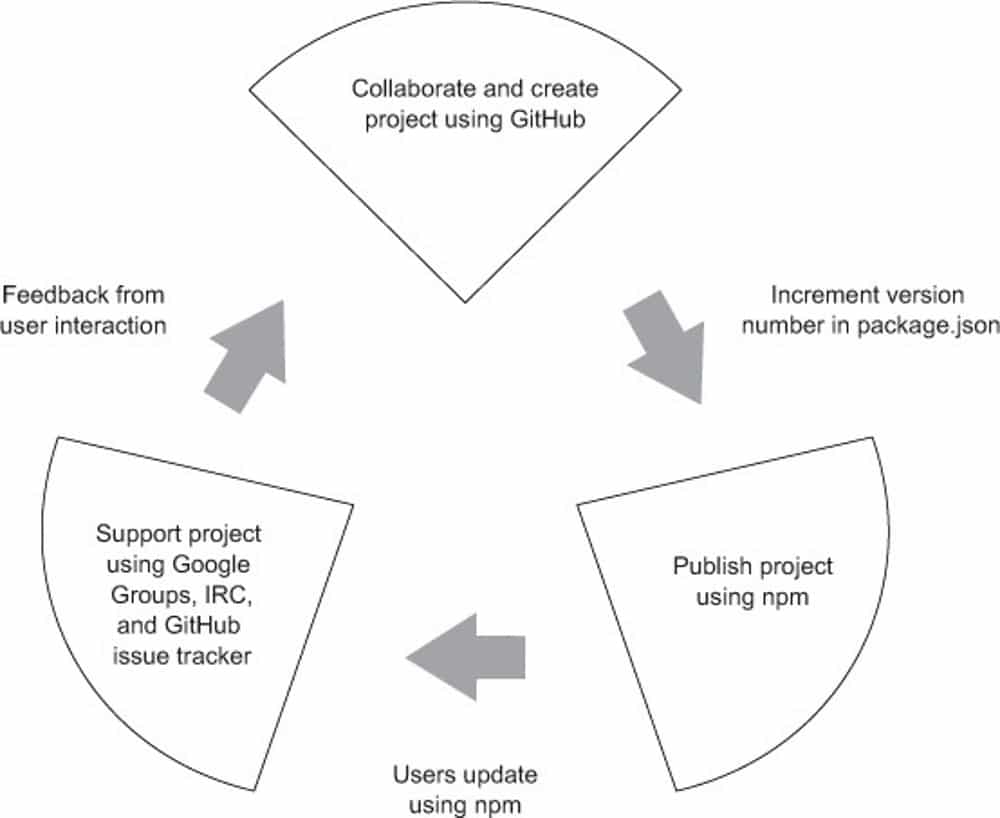
PHP
WordPress, Drupal, Jumla, Facebook, etc. have contributed significantly to the PHP ecosystem. These companies are directly responsible for running millions of websites on the internet, and together, they display PHP’s extraordinary reach.
Moreover, the PHP community has developed a ton of training material and supporting technology over the years to bring new developers on board. If you’re looking for assistance, visit Github, StackOverflow, or similar platforms.
Hosting Opportunities
Node.js and PHP are common with the most prominent global hosting providers, so you won’t have difficulty finding a host that supports either of them.
Interestingly, hosting prices often depend on the availability of said hosting companies. Therefore, do your research before picking one. However, you must prioritize speed, performance, and security when choosing a web host.
If you’re looking for a Node.js hosting solution to manage your projects, check out our application hosting pricing.
Node.js vs PHP: Side-by-Side Comparison Table
Let’s take a look at a side-by-side comparison of Node.js vs PHP and inspect some of the core programming parameters:
| Node.js | PHP | |
|---|---|---|
| Since | 2009 | 1994 |
| Type | JavaScript Runtime Environment | Programming Language |
| Coding | Long | Concise |
| Usage | 1.8% | 78.1% of all websites |
| Engine | Google’s V8 JavaScript | Zend engine |
| Package Manager | Node Package Manager (NPM) | Composer Package Manager |
| Execution | Asynchronous | Synchronous |
| Execution Speed | Faster and Lightweight | Slower than Node.js |
| Concurrency | Event-driven non blocking I/O | Multi-threaded blocking I/O |
| Performance | Faster | Slower |
| Web Server | Doesn’t require | Apache and IIS |
| Database | Any database | Relational and Conventional |
| JSON | JSON.stringify() and JSON.parse() | json_encode() and json_decode() |
| Community | Small but active | Vast online community |
Node.js vs PHP: Which Should You Choose?
Undoubtedly, this is the question we have been trying to solve here with a proper answer. So let’s try to connect all the dots that we’ve been drawing.
Indeed, these two technologies each offer hundreds of features that would make your development effortless, fancier, and stable. However, choosing your technology depends more on your requirements and the type of development you plan to do.
Rather than selecting the superior technology based on random parameters or others’ opinions, you should analyze your requirements based on your goals and needs, then determine the technology that fits you best.
When to Use Node.js
Let’s look at the requirements that would make you choose Node.js over PHP any day:
- FullStack: Pick Node.js if you want both your server-side and client-side development at once. Another solid reason for picking Node.js is to exclude the hassle of collaborating between different frontend and backend teams.
- Speed and Performance: Node.js executes programs faster than most other programming languages. Also, the theNode.js applications have shown a massive performance gain and stability. Pick Node.js if you want your application to handle multiple instructions and requests simultaneously.
- Modern Development methodology: Node.js is a new, modern, updated environment with several packages, excellent frameworks, and a proficient collection of a pretty modern library. As in whole, it provides you to perform innovative development.
- Real Time Data: Node.js is proficient in synchronizing real-time data because of its non-blocking architecture and the special connection between the server and client sides. Hence, pick Node.js if you need real-time data synchronization on your application services.
When to Use PHP
Now, let’s look at the conditions that might prompt you choose PHP over Node.js:
- Flexible and Dynamic: PHP-programmed online applications and websites are highly secure because they are encrypted and quickly scaled, contributing to their dynamism and adaptability. Besides, the online apps and web pages refresh themselves automatically, with no manual interaction. Therefore, you can pick PHP if you want a dynamic language.
- Portability: PHP comes with excellent portability and efficiency when connecting with the servers and databases. You can port your web app into any server that supports apache at any time rather than rebuilding it. Besides, most content management systems (CMS) like WordPress, Jumla, and Drupal use PHP, making it more accessible overall.
Summary
In a nutshell, these web technologies are each one of a kind regarding their characteristics and serving purposes. Both have been great at helping millions of professionals over the years.
But the final verdict relies more on the user requirements than the features Node.js or PHP might provide. One may have all the significant elements you need for your development, while the other may not.
Whether for development or as a potential career path, both are worth picking up. The growing Node.js and the long-sustained PHP still have the utmost attention from the development community and lead to higher salaries.
Therefore, no matter which you choose for your purposes, you can rely on both Node.js and PHP being popular options for developers for a long time in the future.
Which of these two web technologies did you choose for your latest project? Let us know in the comments section below!


